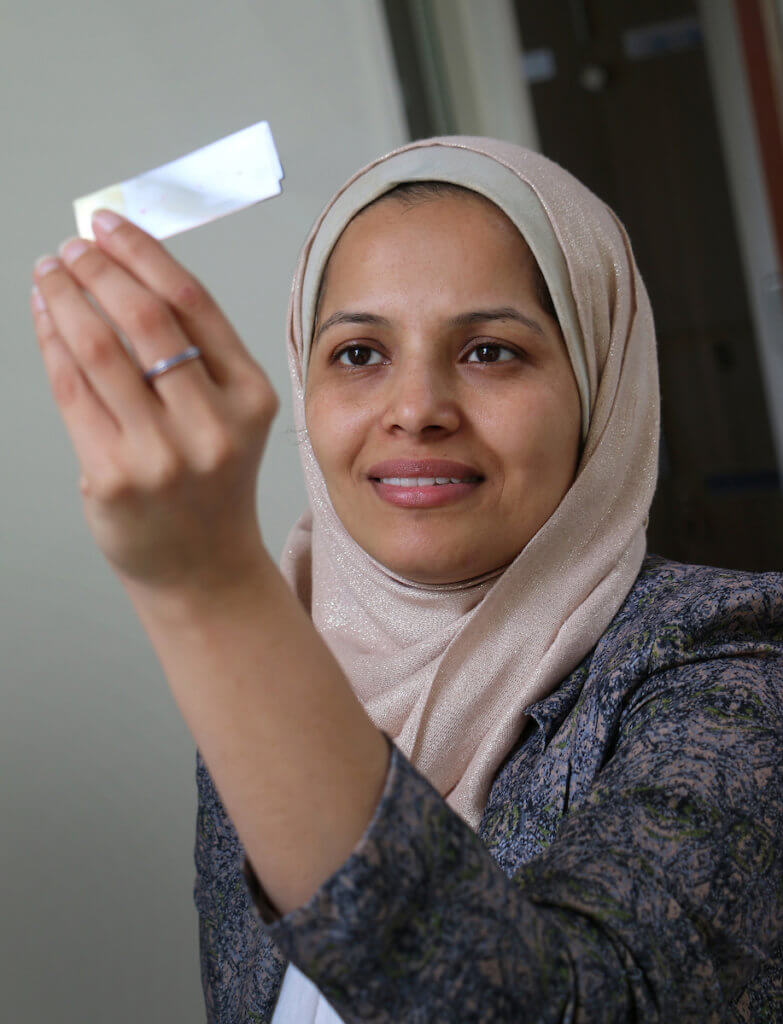When Kristina Bishard was diagnosed with diabetes at age 11, doctors detailed her therapeutic options, which included insulin shots and pumps.
“They were also saying there’s this stem cell research that has the possibility to cure it,” Bishard remembered. “They said ‘It’s pretty far off,’ but I remember that.”
Even as a child, learning how her body reacted to the disease led Bishard to have an interest in biology. And years later it helped drive her decision to pursue a degree in Cal Poly’s master’s-level regenerative medicine program, which focuses on the type of science her doctors had described.
The regenerative medicine field, featuring cell, gene, and tissue-based therapies, has experienced substantial growth – anecdotally proven by the fact that all ten 2020 graduates from Cal Poly’s program landed jobs before graduation — in the midst of of a substantial economic downturn. After years of promise, the field is just now beginning to realize its potential, also evidenced by the large number of clinical trials currently taking place for cell and tissue engineered therapies.
“The most grand possibilities are effective cell-based cures for cancer, diabetes, Parkinson’s, etc., safe and effective gene therapies for monogenic diseases, and enough tissue-engineered organs to eliminate the transplant wait list,” said Trevor Cardinal, director of the master’s program.
While the latter two of those goals are more long term, voter support of stem cell research recently led to the approval of funding the California Institute for Regenerative Medicine (CIRM) for another 20 years, which is expected to further advance the field and transform scientific breakthroughs into clinical treatments and cures. Cal Poly’s interdisciplinary master’s degree program, created in 2009, prepares graduates for careers in the field through coursework and a 9-month internship, which is sponsored CIRM.
While Bishard was drawn to the field through her own personal experience, Isobelle Espirita learned about stem cell research during a community college speech class.
“I feel like I’ve been nudged in this direction most of my college life,” she said.
As an undergraduate biomedical engineering major and later a grad student in the regenerative medicine program, she worked with Cardinal performing research to evaluate a cell therapy candidate for vascular disease. Specifically, she would perform 4-6 rodent surgeries a week to help improve blood flow.
“I would go home and tell my parents I was doing more mouse surgery,” she said.
Those procedures, which entailed stem cell isolations and transplantation, required surgical scrubs and sterile gloves.
“It felt really official,” she said.
The work had an important real-life application: Those surgeries replicated efforts to minimize blockage in human leg arteries.
Each master’s class is capped at ten students, who bond during their studies. While Bishard helped the biology students with cell transplantation, they helped her with biology-related components.
“Everybody has their own strength,” she said. “And that would really come out in certain classes.”
While the classes offered hands-on learning, the 9-month off-site internship offered even more relevant experience.
“The most grand possibilities are effective cell-based cures for cancer, diabetes, Parkinson’s, etc., safe and effective gene therapies for monogenic diseases, and enough tissue-engineered organs to eliminate the transplant wait list,”
Trevor Cardinal, director of the regenerative medicine graduate program
Bishard, who once considered going to medical school, said nine months was enough time to actually get things done.
“With the nine months, I feel like I really contributed to something significant,” said Bishard, who interned with Organovo, known for its ability to 3D bioprint tissues that mimic key aspects of human biology and disease.
Her fiancé, whom she met during a previous internship in Belgium, eventually led her to accept a job with Mimetas, which creates organ-on-a-chip tissue models in the Netherlands. Her Cal Poly experience, she said, provided her confidence to pursue that job, where she works as a process development manager for cell-based products.
“I think it makes you feel really prepared going into the new world,” Bishard said.
While much of field’s best work is yet to come, the real breakthrough, Cardinal said, will occur in the manufacturing of cells and tissues.
“A group at the Texas Heart Institute can already tissue-engineer a human heart – the holy grail of regenerative medicine,” he said.
The technology can’t be performed at the clinical or commercial scale just yet. But the potential to create organs would save countless lives.
Meanwhile, Bishard still uses an insulin pump and wonders when her field might change the lives of diabetes patients like herself.
“I still really believe in it,” she said. “But I think there’s still work to do.”
Espirata’s employer, ViaCyte, is one company doing that work. ViaCyte is currently in clinical trials seeking a functional cure for diabetes.
Caption: Mahvish Syed is one of ten students from the regenerative master’s degree program who landed a job before the Spring 2020 graduation.


